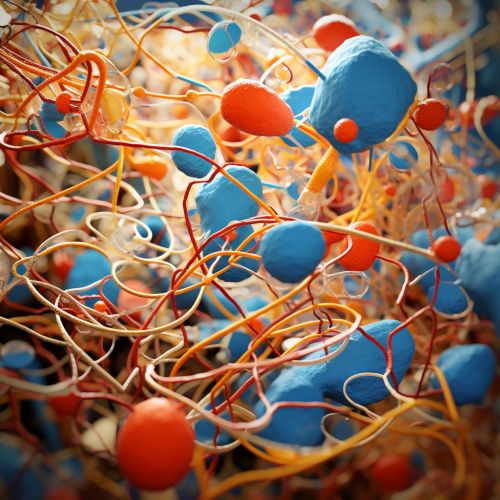Metabolic Pathways
Introduction
Metabolic pathways are a series of chemical reactions occurring within a cell. In a pathway, the initial chemical (metabolite) is changed through a sequence of chemical reactions. These reactions are catalyzed by enzymes, where the product of one enzyme acts as the substrate for the next. These pathways are a vital component of metabolism.


Types of Metabolic Pathways
There are two types of metabolic pathways that are characterized by their ability to either synthesize or break down molecules. These are:
1. Anabolic pathways: These pathways require energy to construct complex molecules from simpler ones. Anabolic pathways are also known as 'biosynthetic' pathways. Examples include the synthesis of proteins from amino acids, and the synthesis of nucleic acids from nucleotides.
2. Catabolic pathways: These pathways generate energy by breaking down complex molecules into simpler ones. The energy released can then be used in other cellular processes. Examples include the breakdown of glucose in the body, and the breakdown of proteins into amino acids.
Regulation of Metabolic Pathways
Regulation of metabolic pathways is critical for maintaining the balance within a cell or an organism. This regulation can occur at various levels, including the control of gene expression, the control of enzyme activity, and the control of the transport of substances across the cell membrane.
Gene expression is the process by which the information in a gene is used to produce a functional product, usually a protein. This process can be regulated to increase or decrease the production of specific proteins in response to changes in the cell's environment.
Enzyme activity can also be regulated, often through a process called feedback inhibition. In feedback inhibition, the product of a metabolic pathway acts as an inhibitor of one of the enzymes in the pathway. This prevents the pathway from producing too much of the product.
Transport of substances across the cell membrane can also be regulated, controlling the amounts of various substances that enter and leave the cell.
Role in Disease
Abnormalities in metabolic pathways can lead to disease. For example, genetic mutations can lead to deficiencies in certain enzymes, disrupting the metabolic pathways in which they are involved. This can result in a variety of metabolic disorders, such as phenylketonuria, a disorder that affects the body's ability to metabolize the amino acid phenylalanine.
In addition, some diseases can be caused by the overactivity or underactivity of certain metabolic pathways. For example, cancer cells often have altered metabolism, with changes in the activity of certain metabolic pathways that allow them to grow and divide more rapidly than normal cells.
Metabolic Pathways and Drug Discovery
Understanding metabolic pathways is also important in drug discovery and development. By understanding the metabolic pathways that are involved in a particular disease, scientists can identify potential targets for new drugs. For example, if a particular metabolic pathway is overactive in a certain type of cancer, a drug could potentially be developed that inhibits this pathway, slowing the growth of the cancer cells.
In addition, understanding the metabolic pathways that a drug will interact with can help predict the drug's effects on the body, as well as any potential side effects. This can help in the design of safer and more effective drugs.
